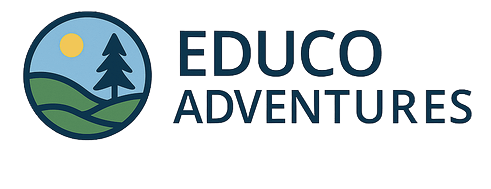How to Secure Funding for Student Travel Programs
Unlock transformative travel experiences! Funding is key to accessing enriching student travel programs that bridge classroom learning with real-world application. Discover diverse funding options, from grants and scholarships offered by institutions like the National Geographic Society, to crowdfunding and sponsorships. Learn how to craft compelling applications and leverage resources like Scholly and Unigo to turn your travel dreams into reality. Start exploring the world of student travel funding today!
Important information

- Student travel programs rely on funding to provide educational experiences, offering equal access for all students.
- Funding options include grants and scholarships (from institutions, foundations, non-profits, and government agencies), crowdfunding, sponsorships, and personal fundraising.
- Key resources for finding funding include college financial aid offices and scholarship websites (Scholly, Unigo, Fastweb).
- Successful applications require a detailed travel budget, compelling justification for the trip, and demonstration of how the travel aligns with academic and career goals.
- Creative fundraising strategies such as crowdfunding campaigns, securing sponsorships, and engaging with local communities can help students reach their funding goals.
Understanding the Need for Funding in Student Travel Programs
Student travel programs depend on funding to offer enriching educational experiences for all students, ensuring equal opportunities regardless of their financial situation. These programs enhance learning by connecting classroom knowledge with real-world situations and promoting intercultural understanding. Financial aid plays a vital role in broadening access and fostering diversity and inclusion. Research conducted by the Institute of International Education confirms that studying abroad cultivates essential intercultural competence and adaptability skills valuable in today’s globalized world.
Exploring Funding Opportunities for Student Travel
Students can finance their adventures through various avenues, including grants and scholarships from educational institutions, foundations, non-profits, and even government agencies. While government funding often targets specific programs, numerous other options exist.
Funding Options
- Grants and scholarships from educational institutions, foundations, and non-profits.
- Government funding (often program-specific).
- Crowdfunding to share travel aspirations and receive broader audience contributions.
Additional Support
- Sponsorships from local businesses or community groups.
- Selling items or services to supplement funds.
Resources like college financial aid offices, scholarship websites, and databases simplify the search and application process, helping students turn their travel dreams into reality.
Grants and Scholarships for Educational Travel
Funding educational travel programs is often easier than students think. Grants and scholarships can significantly reduce the cost of flights, accommodation, and program fees. Many organizations offer such financial aid, including educational foundations, government agencies, and nonprofits. These groups may prioritize programs focused on cultural exchange, academic enrichment, or specific regions, but finding applicable funding is straightforward. Students can explore online scholarship databases, consult their school’s financial aid office, or check resources available on travel program websites.
Crowdfunding Platforms for Student Travel
Crowdfunding can be a useful tool for students seeking financial assistance for educational trips. Platforms like FundMyTravel and GoFundMe cater to a broad audience, while specialized platforms such as Abroadly and Piglt focus on international travel opportunities. A significant advantage of using these platforms is that students keep all funds raised, empowering them with greater financial control.
Government Agencies and Nonprofit Organizations
Government agencies and non-profit organizations play a vital role in funding student travel by offering grants and scholarships for educational trips. This financial aid is often directed towards specific areas, such as particular academic disciplines or research projects. Notable examples include the US Department of State’s Fulbright Program and the National Geographic Society, both providing invaluable opportunities for students.
Resources for Finding Student Travel Grants and Scholarships
College financial aid offices are invaluable resources for travel grants and scholarships, offering personalized advice tailored to your major and academic standing. While they may not list every possibility, their expertise unlocks numerous funding opportunities.
Scholarship websites like Scholly, Unigo, and Fastweb are another excellent tool. These databases compile numerous scholarships, some specifically for student travel, searchable by destination and field of study. This simplifies the search process, providing access to a wide range of funding options.
Consulting College or University Financial Aid Offices
Planning an educational trip but short on funds? Your college financial aid office is a great place to start. They can offer valuable guidance on scholarships and grants, and even connect you with travel-specific funding opportunities. The financial aid office will also help you understand eligibility requirements and navigate the application process.
Utilizing Scholarship Websites and Databases
Looking for travel grants? Scholarship websites and databases are invaluable resources. These platforms offer a centralized search hub, categorizing scholarships for easy navigation. Refine your search by subject, destination, or eligibility criteria. Sites like Scholly, Unigo, and Fastweb allow further filtering, tailoring results to your academic achievements and travel aspirations. This empowers students to quickly pinpoint and secure relevant funding opportunities.
How to Apply for Student Travel Grants and Scholarships
Eligibility for these opportunities usually depends on good grades, a relevant program of study, and a specific destination. A typical application includes a completed application form, a personal statement, academic transcripts, and letters of recommendation. You will also need a detailed travel proposal that showcases your relevant skills and experiences. Clearly explain how the trip aligns with your academic and career goals, emphasizing the potential impact of the travel experience and how it will benefit your development.
Eligibility Criteria for Applications
Students seeking a degree or certificate typically qualify for these programs, though some may have additional prerequisites such as a minimum GPA or a specific major. Applicants should review each program’s guidelines for age limits, nationality restrictions, or approved travel destinations.
Essential Application Components
A strong application requires a detailed travel budget. A clear budget demonstrates your financial planning skills.
A compelling reason for your trip is also essential. A strong justification highlights the educational value and aligns with the funder’s goals.
Thoroughly completing each section and following all instructions will significantly improve your application’s success.
Demonstrating Qualifications and Unique Qualities
Showcase your travel experiences and related skills. Connect your abilities to the program’s goals. Explain how this opportunity will contribute to your academic and personal development using concrete examples. Customize each application to the specific program.
Emphasizing Sustainable Tourism
If the program emphasizes sustainable tourism, highlight your passion for environmental protection.
Highlighting Cultural Exchange
If it centers on cultural exchange, showcase your cross-cultural communication abilities.
Demonstrate how the program aligns with your future aspirations. Show them you’re the ideal candidate.
Creative Fundraising Tools and Strategies
Boost your trip fundraising with creative events like bake sales and car washes. Online crowdfunding is another effective method to secure financial support.
Sponsorships
Sponsorships from local businesses, community organizations, and corporations can significantly reduce your travel costs. Offer brand visibility and promotional opportunities in return for their support.
Community Engagement
Use social media and your local community to boost your fundraising efforts. Share compelling travel stories, promote your campaigns, organize local events, and engage with your audience to generate substantial support.
Creating Travel Campaigns
Planning a Successful Travel Campaign
Define Your Funding Goal.
Establish a precise funding target and transparently list all expected trip costs.
Craft a Compelling Story.
Clearly articulate the purpose of your trip and highlight the enriching experiences it will offer. Use visuals like photos and videos to boost engagement.
Engage and Show Gratitude.
Regularly update your supporters on your campaign’s progress and express sincere thanks for their contributions.
Promote Your Campaign Widely.
Utilize social media, email, and other channels to spread awareness. Consider using crowdfunding platforms for broader reach and secure payment processing.
Reach Out to Your Network.
Don’t hesitate to ask for support from friends, family, and your community.
Securing Sponsorships for Travel
Sponsorships can significantly reduce the financial burden of student travel. Local businesses are often willing to fund these trips in exchange for advertising opportunities, such as displaying their logos on student gear.
A compelling proposal is crucial for securing these sponsorships. It should clearly outline the advantages for sponsors, including enhanced visibility and opportunities for community engagement. Offering naming rights to an event, for instance, can be a powerful incentive.
Collaborating with local media can amplify a sponsor’s reach, making the sponsorship even more attractive. Here’s how to create a winning sponsorship proposal:
- Clearly articulate the benefits for sponsors, such as increased brand visibility and community engagement opportunities.
- Offer attractive incentives, like naming rights to an event.
- Highlight the potential for amplified reach through collaboration with local media.
Utilizing Social Networks and Local Community Support
Students can leverage social media platforms like Facebook, Instagram, and Twitter to share their travel plans and fundraising goals with a wider audience.
Engaging with the community through active participation, not just online presence, builds a strong support network, boosting fundraising and fostering community involvement. This strengthens community ties and amplifies fundraising efforts.
Organizing fundraising events and partnering with local businesses are also essential for successful fundraising.
Student presentations to community groups help cultivate local support and build valuable connections. This direct interaction fosters relationships and increases community engagement.
Investing in students’ educational journeys through these initiatives creates mutually beneficial relationships for both the students and the community.













